Introduction
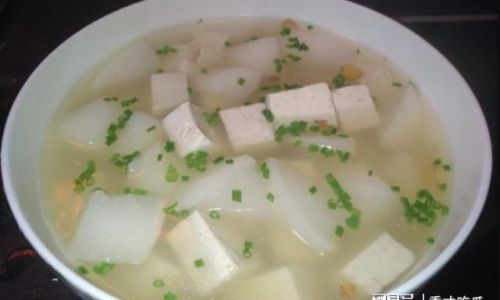
In the realm of comfort foods, soups occupy a pedestal that few dishes can rival. They encapsulate the essence of nourishment, warmth, and simplicity, making them an indispensable part of culinary traditions worldwide. Among the myriad of soup varieties, daikon soup stands out for its delicate balance of flavors and its profound health benefits. Daikon, also known as white radish or Chinese radish, is a versatile root vegetable that adds a subtle sweetness and a crisp texture to dishes. When cooked into a soup, it transforms into a soothing, nutritious broth that is perfect for all seasons. This article delves into the intricacies of how to cook daikon soup, from selecting the right ingredients to mastering the cooking process, ensuring that you create a bowl of liquid gold that warms the soul and nourishes the body.
Understanding Daikon: A Nutritious Root
Before diving into the recipe, it’s crucial to understand what makes daikon such a remarkable ingredient. Daikon belongs to the Brassica family, which includes broccoli, cabbage, and kale, making it a nutrient-dense food. It is rich in vitamins A, C, and K, as well as dietary fiber, antioxidants, and minerals like potassium and magnesium. Daikon’s mild flavor and tender texture make it an excellent base for soups, where its nutritional benefits can be fully harnessed.
Choosing the Perfect Daikon
The first step in making a delicious daikon soup is selecting a high-quality daikon. Look for firm, smooth roots with a bright white or light green exterior. Avoid daikon with cracks, soft spots, or discoloration, as these are signs of spoilage. The size of the daikon can vary, but for soup, a medium-sized root is usually sufficient. Freshness is key; try to buy daikon from a local farmer’s market or a well-stocked grocery store to ensure it’s been recently harvested.
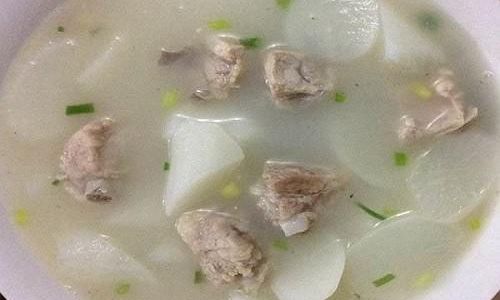
Gathering the Ingredients
Once you have your daikon, it’s time to gather the rest of the ingredients. Here’s a basic list for a classic daikon soup:
- 1 medium-sized daikon, peeled and sliced into thin rounds or matchsticks
- 1 medium onion, chopped
- 2-3 cloves of garlic, minced
- 1-inch piece of fresh ginger, sliced thinly
- 4-6 cups of vegetable or chicken broth (homemade or low-sodium store-bought)
- 2-3 tablespoons of soy sauce or tamari (for a gluten-free option)
- 1 tablespoon of sesame oil
- Salt and pepper to taste
- Optional garnishes: chopped green onions, sesame seeds, a drizzle of chili oil, or a splash of lime juice
Preparing the Ingredients
Before starting the cooking process, take a few minutes to prepare your ingredients. Peel the daikon and slice it into thin rounds or matchsticks for a quicker cooking time and better texture. Chop the onion, mince the garlic, and slice the ginger thinly. Having all your ingredients ready will streamline the cooking process and ensure a smoother workflow.
Cooking the Soup: Step-by-Step
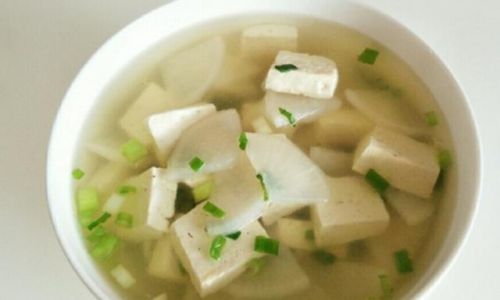
-
Sautéing the Aromatics:
Begin by heating a large pot or Dutch oven over medium heat. Add the sesame oil and swirl to coat the bottom of the pot. Once the oil is hot, add the chopped onion and sauté until it becomes translucent, about 3-4 minutes. Add the minced garlic and sliced ginger, stirring constantly to prevent burning. Cook for another 1-2 minutes until fragrant. -
Adding the Daikon:
Now, add the sliced daikon to the pot. Stir to combine with the aromatics, ensuring everything is evenly distributed. Cook for a couple of minutes, allowing the daikon to start absorbing the flavors of the onions, garlic, and ginger. -
Pouring in the Broth:
Gradually pour in the vegetable or chicken broth, stirring as you do so. Bring the mixture to a gentle boil, then reduce the heat to low. Cover the pot and let the soup simmer for about 20-30 minutes, or until the daikon is tender but still holds its shape. -
Seasoning the Soup:
After the daikon has cooked to your liking, stir in the soy sauce or tamari. Taste the soup and adjust the seasoning with salt and pepper as needed. Remember, soy sauce can add both salt and flavor, so be cautious when adding additional salt. -
Final Touches:
Once the soup is seasoned to perfection, remove it from heat. If desired, you can garnish with chopped green onions, a sprinkle of sesame seeds, a drizzle of chili oil for some heat, or a splash of lime juice for a refreshing tang.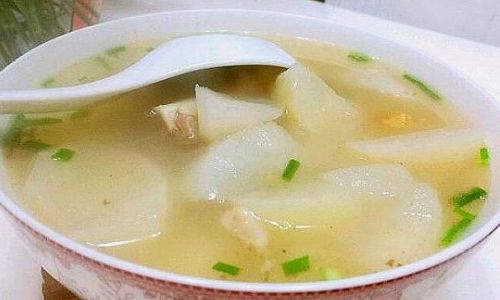
Serving and Enjoying
Ladle the daikon soup into bowls, making sure each serving includes a generous portion of the tender daikon and flavorful broth. Serve immediately while hot, pairing it with a side of steamed rice, a simple salad, or crusty bread for a more filling meal. Daikon soup is also wonderful as a light lunch or a comforting dinner, especially during colder weather.
Storage and Reheating
If you have leftovers, daikon soup can be stored in an airtight container in the refrigerator for up to 3 days. To reheat, simply place the soup in a pot on the stove over medium-low heat, stirring occasionally until warmed through. Avoid over-boiling, as this can make the daikon mushy.
Conclusion
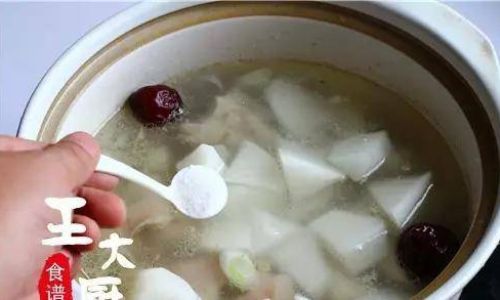
Cooking daikon soup is not just about following a recipe; it’s about creating a dish that embodies warmth, nourishment, and love. By understanding the nuances of selecting, preparing, and cooking daikon, you can transform this humble root vegetable into a culinary masterpiece. Whether you’re looking to boost your immune system, enjoy a light and healthy meal, or simply indulge in a comforting bowl of soup, daikon soup offers a perfect blend of flavors and nutrients. So, the next time you’re in the kitchen, gather your ingredients, follow these steps, and let the art of cooking daikon soup bring joy and wellness to your table.





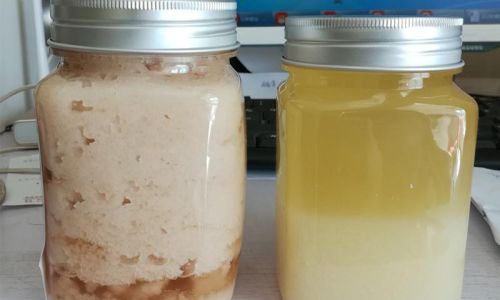
0 comments